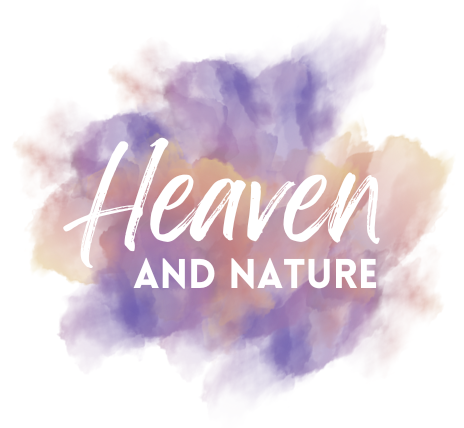The Wildlife Loop in Custer State Park is in the southern Black Hills of South Dakota. It’s a great drive to see not just the wildlife but also some of the Black Hills’ most beautiful scenery.
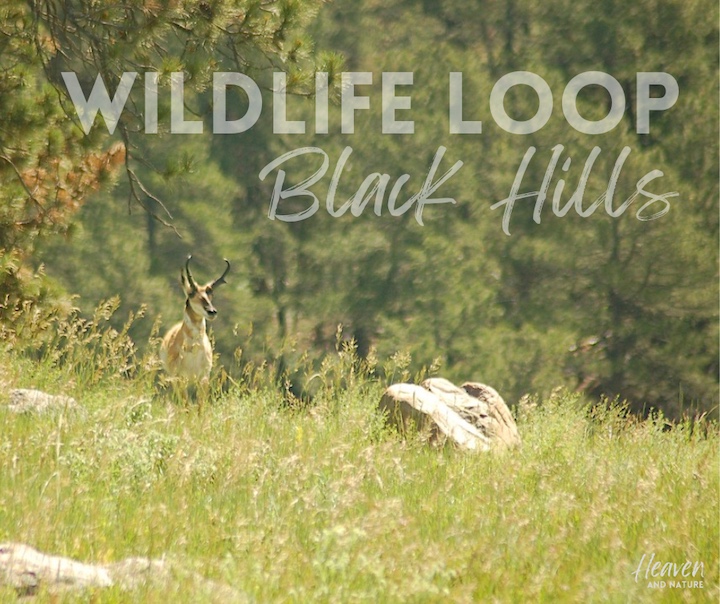
As is usual when looking for wildlife, you’re more likely to see them earlier in the morning and later in the afternoon or evening. Especially during the hot summer days.
The loop is just 18 miles long, but the park suggests allowing an hour-and-a-half for it. If cars are stopped along the road, it’s probably because there’s some wildlife in sight.
Bring your binoculars!
Though there’s no fee to enter the Black Hills, the Wildlife Loop is inside Custer State Park, so there’s you’ll need a vehicle permit. It was $20 per vehicle ($10 for motorcycles) the last time we were there.
The Wildlife
American Bison
Once covering the Great Plains by the millions, the bison was hunted almost to extinction in the 1800s.
Custer State Park is a great place to get a glimpse of these huge animals. The first time our family was at Custer we got to witness the awesome sight of a herd of a couple hundred of them next to the road, and even crossing the road.

The bison population in the park is about 1,300 animals. It’s culled annually through a roundup to keep the herd size manageable and healthy.
Bison are North America’s largest land mammal. Bulls often weigh 2,000 pounds, with cows averaging around 1,100 pounds. Though they look cumbersome, they can run 35 mph and are strong swimmers. (source)
Don’t get any ideas about getting out of your car to approach these guys for a selfie! If it’s tempting, this video should cure you of that.
Pronghorn
Common in the grasslands of the American West, pronghorn can also be seen along the Wildlife Loop.
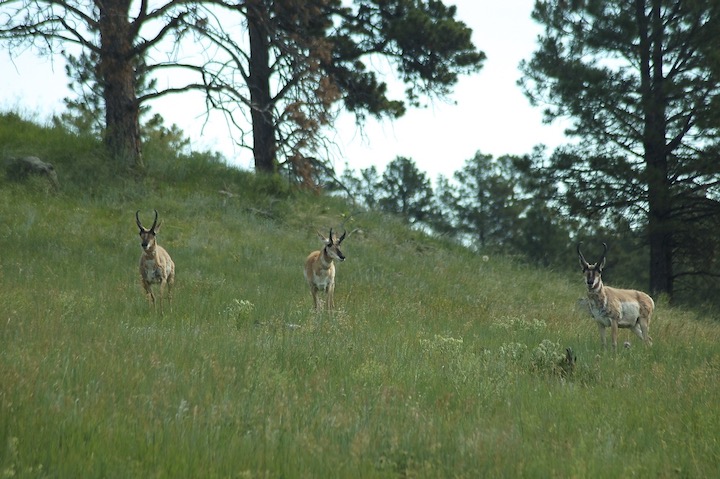
Did you know pronghorn can sprint over 50 miles-per-hour and maintain a 45-mph pace for miles at a time? They’re North America’s fastest land animal.
Both male and female adults have horns, with the male’s being longer and with the distinctive prong. (source)
Wild Burro
Custer’s burros originally came from domesticated stock, like the wild horses of the West.
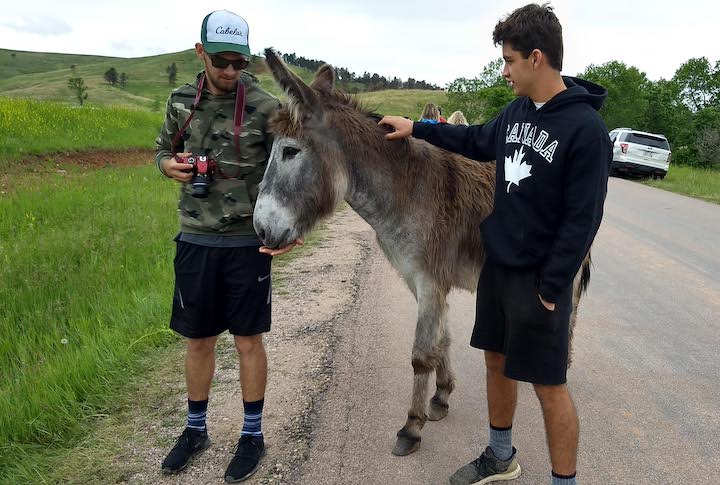
Unlike wild horses, though, the burros continue to act tame several generations later! Each time our family has driven the Wildlife Loop we’ve seen these furry, long-eared, friendly beasts.
They acted more like dogs—walking right up to us, looking for food, even sticking their noses in car windows. No shyness with them!
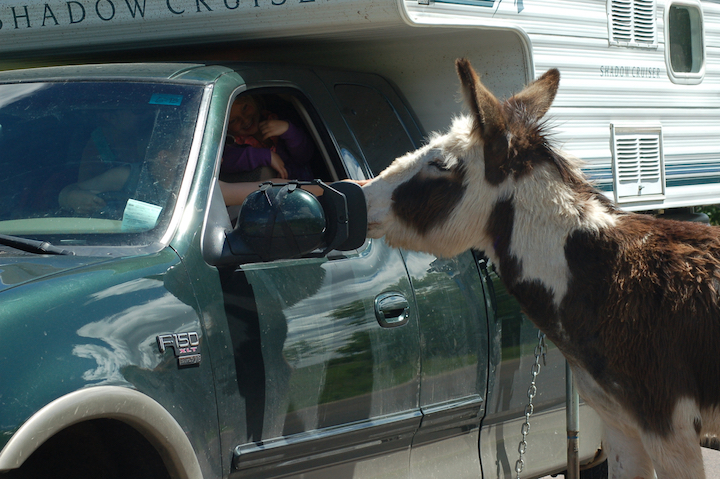
Other Wildlife
MOUNTAIN SHEEP & GOAT—We haven’t gotten to see these more elusive, higher-elevation creatures on either of our family trips—although we usually see sheep in nearby Badlands National Park.
My husband and I saw two mountain goats along Needles Highway when we drove through it in 2020:
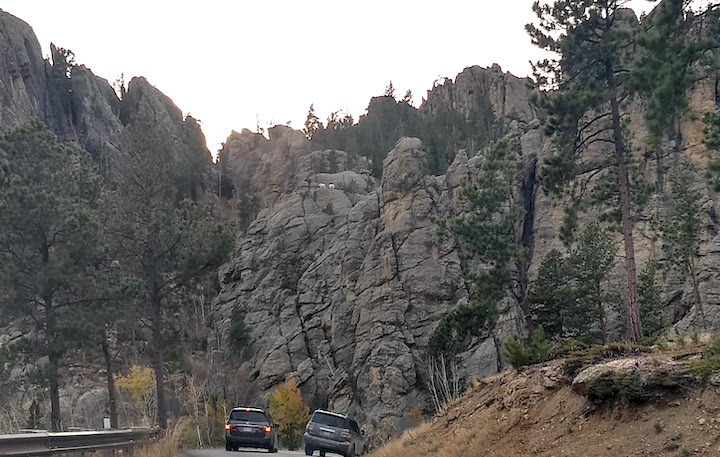
MULE DEER & ELK—Mule deer are quite common…very similar to their white-tailed cousins we see often here in Minnesota, but with bigger ears. The elk have eluded us so far, but are there, we’re told.
PREDATORS—Mountain lions, coyotes and fox are the larger resident predators. Black bears, while seen occasionally, are rare there.
PRAIRIE DOGS—These are common out in the West, too. Cute little ground-dwelling rodents that live in large families. Look for their “towns” in flattish grassy areas.
Take These Drives, Too
As I already mentioned, our family has driven the Wildlife Loop twice, in the summers of 2009 and 2017. Then my husband and I drove it one evening in October 2020.
The main attraction of this loop is, of course, the wildlife.
Both times we were with the family we wanted to end up at Mount Rushmore, and took a different route to get there each time.
The main attraction of both these routes is the scenery:
Iron Mountain Road
What I remember most about this scenic drive are the several tunnels we went through heading north towards Mount Rushmore.
Each tunnel is designed to offer a view of Rushmore as you drive through. And of course, each tunnel gets closer and closer, so the view gets bigger and bigger. Very cool!

Needles Highway
The other route, which we took during our latest trip in June, follows Needles Highway.
This highway is named for the tall spired rock formations and two narrow tunnels, culminating in The Needles Eye Tunnel. The tunnel is just barely wide enough for our Expedition and popup camper with maybe 8 inches to spare!

NOTE: Both Iron Mountain Road and Needles Highway are narrow, switchback mountain roads. The going is slow, and there are steep drop-offs in many areas as you go up and down the sides of mountains.
Creativity & Beauty Packed Together
There’s SO much to do and see in the Black Hills. You could easily spend a full day enjoying just what I’ve told you about here.
There are great hikes to trek, pull-offs for better views, so much gorgeous scenery to enjoy.
These same animals (except the burros) can be seen in the bigger parks of the Tetons and Yellowstone. But the Wildlife Loop in Custer is in a much more condensed area, so it doesn’t take nearly as much driving to see them.
Our kids loved this Loop whether they were 11-15 like the first time, or 19-23 like our second family trip.
It’s a great way to see God’s tremendous creativity in the wildlife and the landscape.
Here’s more…
- Don’t Miss the Dream Lake Hike When You Visit Rocky - June 26, 2025
- Ride a Bike for the Best Mackinac Island Experience - June 12, 2025
- The Light of the Lord Shines in the Darkness - May 12, 2025
